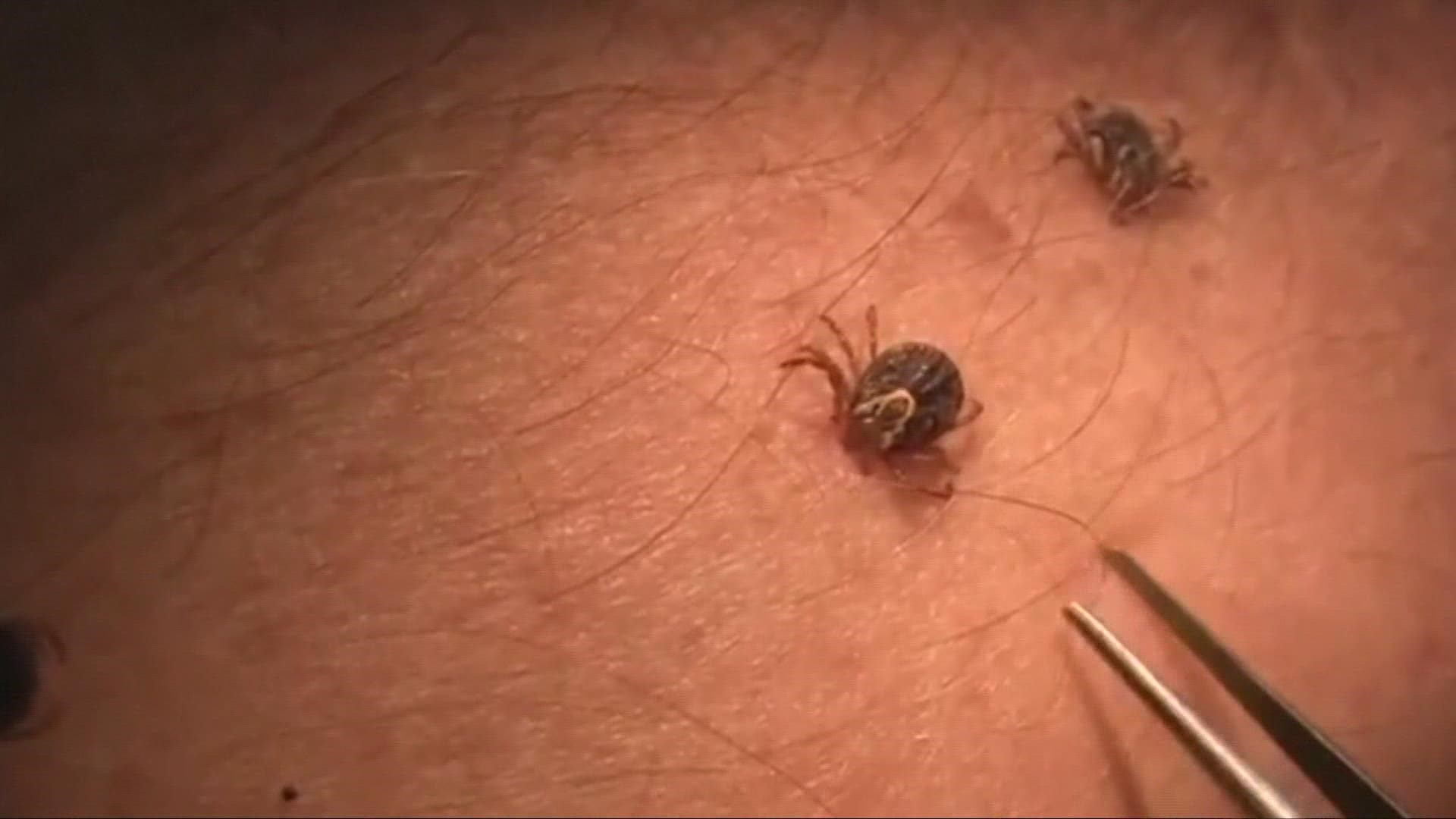CLEVELAND — As warmer temperatures return, it also means ticks are back.
Dan Sullivan, a doctor with the Cleveland Clinic, is offering a reminder that ticks can transmit Lyme disease.
“The early symptoms are the ones where you may have the neck stiffness, the muscle aches, a low-grade fever, the change in appetite, that tends to be in that early phase where this tick has bitten us and put that bacteria into our skin,” he explained.
Other symptoms include...
- Headaches
- Breathing issues
- Arthritis
More serious complications can occur as well, which include inflammation of the heart muscle, spinal cord swelling or facial paralysis.
How to prevent ticks
The Cleveland Clinic outlines the following things you can do to keep your family safe during tick season:
- Ticks like to hide in high grass, so keep the lawn mowed and hedges trimmed.
- When going into the woods, cover up exposed skin with clothing. Insect repellant containing DEET can also be used to help protect exposed skin.
- After being in heavily wooded areas -- do a tick check. It’s important to look behind knees, under arms and on the scalp.
What to do if you find a tick on your skin
If you find a tick, carefully remove it with tweezers. And if bitten, watch for a small red spot that may develop into a distinctive bullseye rash.
“That bacteria, which is in the saliva, starts to multiply and that causes the expanding rash beyond that initial red mark,” said Dr. Sullivan. “As that bacteria expands under our skin, the center, that initial red spot starts to fade so it looks a little bit like a bullseye.”
If you are experiencing symptoms or notice a bullseye rash see a physician. If caught early, Dr. Sullivan said Lyme disease can generally be cured when treated with antibiotics.
More tips from the CDC
The Centers for Disease Control and Prevention also offers these tips on keeping ticks away:
- Use of pesticides can reduce the number of ticks in treated areas of your yard. However, you should not rely on spraying to reduce your risk of infection.
- Remove leaf litter.
- Clear tall grasses and brush around homes and at the edge of lawns.
- Place a three-foot wide barrier of wood chips or gravel between lawns and wooded areas to restrict tick migration into recreational areas.
- Mow the lawn frequently.
- Stack wood neatly and in a dry area (discourages rodents).
- Keep playground equipment, decks and patios away from yard edges and trees.
- Discourage unwelcome animals (such as deer, raccoons and stray dogs) from entering your yard by constructing fences.
- Remove old furniture, mattresses or trash from the yard that may give ticks a place to hide.
RELATED: Trying to lose weight by summer? Cleveland Clinic dietician gives expert advice you need to know
Editor's note: Video in the player above was originally published in an unrelated article on March 24, 2022.

